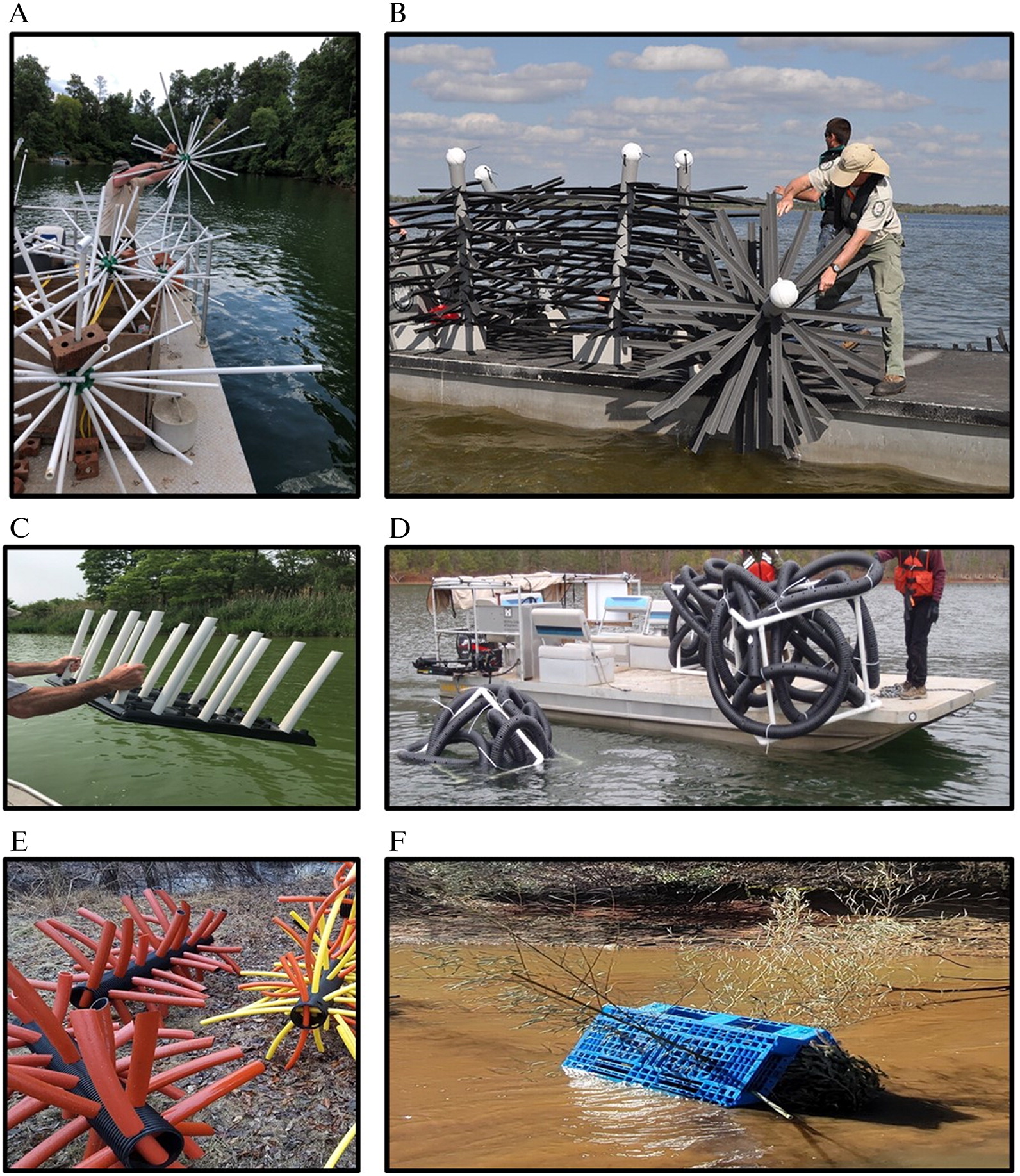On the troubling use of plastic ‘habitat’ structures for fish in freshwater ecosystems – or – when restoration is just littering
Abstract
Introduction

The Issues
Confusing habitat enhancement for fishing with restoration
Substituting natural substrates with plastic can disrupt ecosystems
Invasive species love artificial habitat structures
Plastic is pollution
Cradle-to-grave consequences associated with use of plastics
A weak evidence base to support use of plastics yet entrenchment of ideas
Sending the wrong message to youth and the public
Lost opportunity to focus on the ‘real’ restoration of freshwater ecosystems
Moving forward
Do no harm
Develop a decommissioning plan
Research is needed on plastic substrate breakdown and leaching
Natural materials such as logs and rocks should always be favoured over artificial materials
Do not masquerade the creation of fishing opportunities as restoration or conservation
Consult other waterbody users, rights holders and stakeholders about use of plastic structures
Step up and step in: all hands on deck to restore freshwater ecosystems
Conclusions
Acknowledgements
References
Information & Authors
Information
Published In

History
Copyright
Key Words
Sections
Subjects
Authors
Author Contributions
Competing Interests
Metrics & Citations
Metrics
Other Metrics
Citations
Cite As
Export Citations
If you have the appropriate software installed, you can download article citation data to the citation manager of your choice. Simply select your manager software from the list below and click Download.
There are no citations for this item
